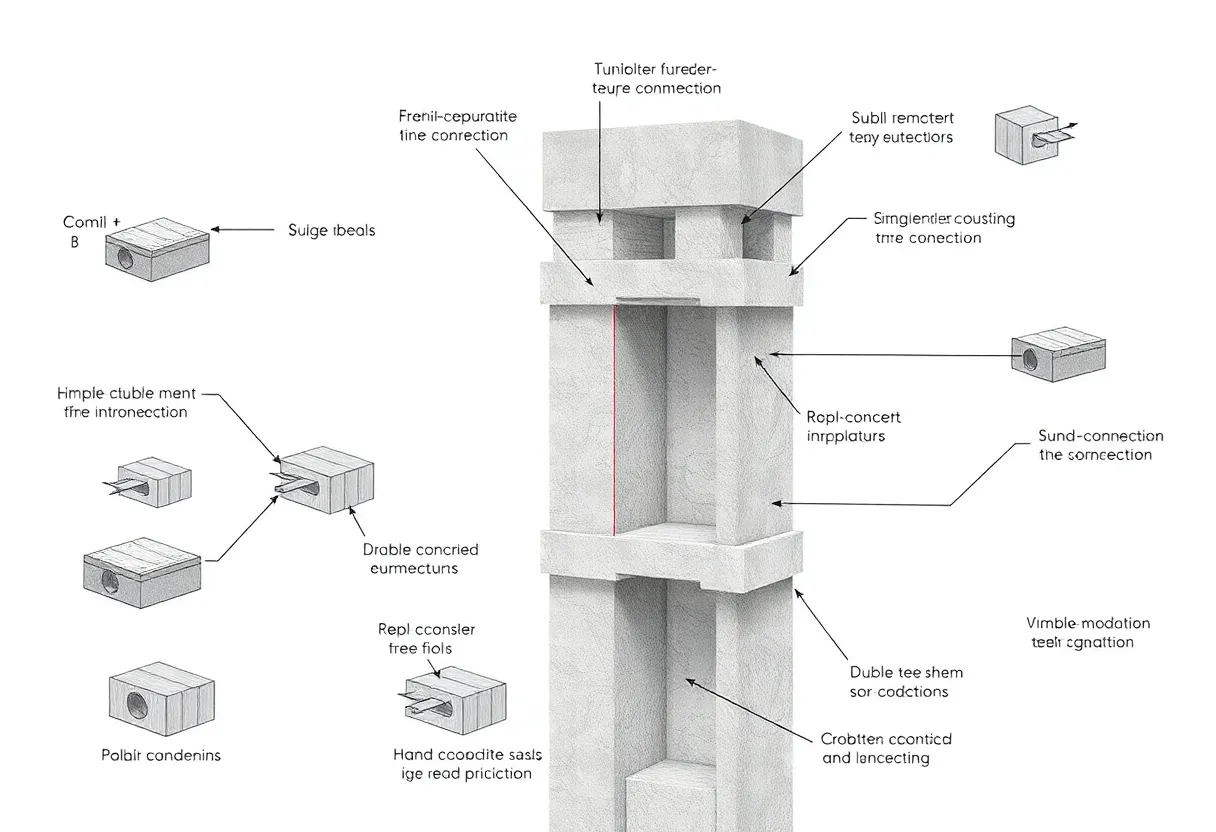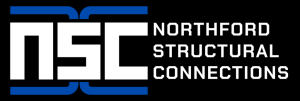

Overview of double-tee shear connections demonstrating their application in precast concrete structures.
Article Sponsored by:
Northford Structural Connections (NSC) specializes in innovative engineering solutions for enhancing the safety and durability of precast concrete structures. Their patented products, including the Double-Tee Flexible Connection (DTFC) and Double-Tee Connection Pro (DTC Pro), address critical challenges like fatigue, corrosion, and seismic resilience. With a focus on quality and longevity, NSC provides advanced connection systems trusted by industry professionals for both retrofitting and new construction projects.
In the realm of precast concrete construction, double-tee shear connections play a crucial role. This guide provides an overview relevant for beginners seeking to understand double-tee shear connections, their design, applications, and significance in structural engineering.
Double-tee shear connections are integral parts of precast concrete systems. They facilitate load transfer between elements, ensuring stability and strength in structures. A double-tee is a specific form of precast concrete beam recognized for its distinctive shape, resembling a “T” when viewed in cross-section. This design enables the double-tee to efficiently span longer distances and bear substantial loads.
Shear connections connect precast elements and help manage shear forces. These forces arise when loads are applied parallel to the connection plane, potentially leading to structural failure. A well-designed double-tee shear connection enhances the overall integrity of precast structures.
Double-tee shear connections can be categorized primarily into two types: moment connections and shear connections. Each type serves a unique purpose in construction and behavior under load.
Moment connections are designed to resist bending moments in addition to shear forces. They provide a robust connection that allows for the transfer of both shear and moment between the double-tee elements. This type is essential in areas subject to significant lateral forces, such as seismic or wind loads.
Shear connections are focused primarily on transferring shear forces without resisting moments. These connections typically allow for some rotation between elements. This is sufficient in scenarios where bending moments are minimal or non-existent. They’re commonly used in simpler structures where lateral forces are not a concern.
When designing double-tee shear connections, engineers must consider various factors to ensure safety, durability, and performance.
The design must account for the types and magnitudes of loads that the connection will experience. This includes static loads from the building’s weight and dynamic loads from environmental factors.
Choosing appropriate materials is critical. Concrete strength, reinforcement type, and configuration directly influence connection performance. The use of high-strength concrete can enhance load-bearing capacity.
The shape and dimensions of shear connections also impact their effectiveness. Adequate width, depth, and angle of connection contribute to optimal load transfer capabilities.
Connection details must allow for easy assembly during the construction process. Engineers should provide clear and precise instructions for the placement of reinforcements and other connection components.
Double-tee shear connections are prevalent in various construction scenarios, particularly in commercial and industrial buildings. They are commonly used in:
Double-tee systems are ideal for parking garages due to their ability to span large areas without the need for numerous columns, maximizing available space.
The repetitive nature of double-tee elements lends itself well to warehouse constructions. They provide spacious interiors while meeting stringent durability requirements.
In retail construction, double-tee shear connections allow for open, adaptable floor plans that can accommodate evolving business needs.
The use of double-tee shear connections in precast concrete systems offers several advantages:
Utilizing precast elements, including double-tees, accelerates the construction timeline. Components can be fabricated off-site and assembled quickly on-site.
Although initial costs can be higher for precast systems, savings can be realized through reduced labor costs and faster project completion. The overall lifecycle costs can also be lower due to reduced maintenance needs.
Double-tee connections allow for versatile structural designs. Engineers can create varying shapes and layouts to meet specific project requirements without compromising strength.
Precast components can be manufactured under controlled conditions, leading to consistent quality and durability. This enhances the overall performance of the structure.
While double-tee shear connections present numerous benefits, they also pose challenges that engineers must navigate effectively.
Transporting precast elements to site can be complex, especially when dealing with large or heavy pieces. Proper planning is essential to ensure safe delivery and installation.
The connection detail is critical to the performance of double-tee shear connections. Inadequate details can lead to issues such as insufficient load transfer, which can compromise structural integrity.
Double-tee shear connections must comply with building codes and standards, which can vary by jurisdiction. Engineers need to stay informed about these regulations to ensure compliance in their designs.
Double-tee shear connections are vital elements in precast concrete construction. Understanding their design and application is essential for engineers and builders alike. By focusing on load requirements, material selections, and connection detailing, professionals can create robust structures that meet contemporary building needs.
With the key advantages they offer in terms of speed, cost efficiency, and quality, double-tee shear connections will continue to be a popular choice in the world of structural engineering.

Concrete Strength • Metal Resilience • Connecting Futures
Phone: (203) 777-0751
Email: admin@nscclips.com